
views
- FTE is the full-time equivalent hours that all the employees in your business represent. Each full-time employee counts as 1 FTE.
- Add the hours worked by part-time employees to the hours worked by full-timers to get the total hours.
- Divide the total hours worked by the number of full-time hours for the given time period to find the FTE.
What is FTE?
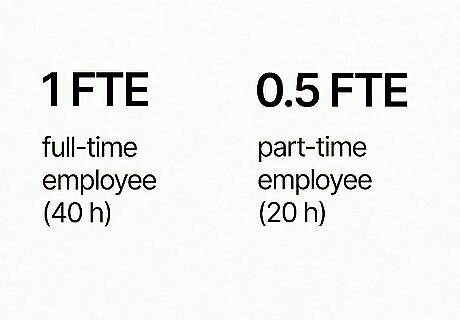
FTE is the number of full-time equivalent hours all your employees work. For a 40-hour workweek, a full-time employee that works 40 hours counts as 1 FTE. A part-time employee that works 20 hours a week counts as 0.5 FTE. If you add all of the weekly hours of your employees and divide it by the hours in the workweek, you’ll determine how many full-time equivalent employees your business has. You can find the FTE for any amount of time. To get FTE for the year, divide the total annual hours worked by 2080, which assumes a 40-hour workweek for 52 weeks of the year. To calculate for the month, divide by 173.33, which is equivalent to 2080 hours divided by 12 months. You can also use an online calculator if you don’t want to manually calculate FTEs. For the most accurate FTE calculation, hire a tax lawyer or accountant to calculate them for you.
Example FTE Calculation
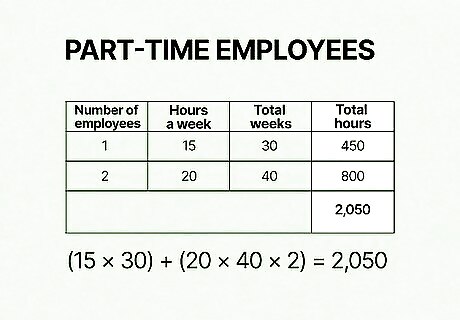
Determine the hours worked by part-time employees. Make a list or pull the accounting records for all of the employees that work fewer than 30 hours a week. Add the hours for all the employees together. Example: You have 3 part-time employees for the year. One works 15 hours a week for 30 weeks, and the other 2 work 20 hours for 40 weeks each. The first employee works: 15 hours x 30 weeks = 450 hours. The second and third employee work: 20 hours x 40 weeks x 2 employees = 1,600 hours. Add the hours together: 450 hours for 30 weeks + 1,600 hours for 40 weeks = 2,050 part-time hours for the year.
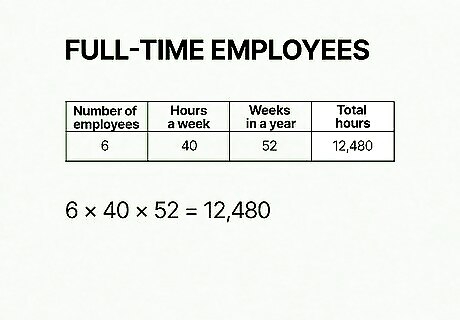
Total the hours that full-time employees worked. Full-time employees usually work 40 hours each week for over 120 days a year, but it also includes anyone who works more than 30 hours weekly. Add all of the hours from full-time workers together to use for your calculation. Example: You have 6 full-time employees working 40 hours a week. 40 hours x 6 employees = 240 weekly hours. Multiply the hours by 52 (weeks in a year) to determine full-time annual hours: 52 weeks x 240 hours = 12,480 annual full-time hours. If your business has a 32- or 35-hour workweek, then multiply the number of employees by that amount instead of 40.
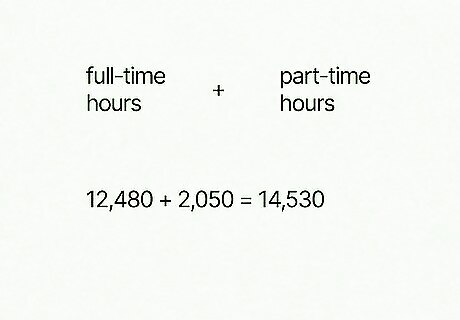
Add the full-time hours to the part-time hours. The result you get is the total hours worked by all the employees in your business. Example: 12,480 full-time hours + 2,050 part-time hours = 14,530 total hours.
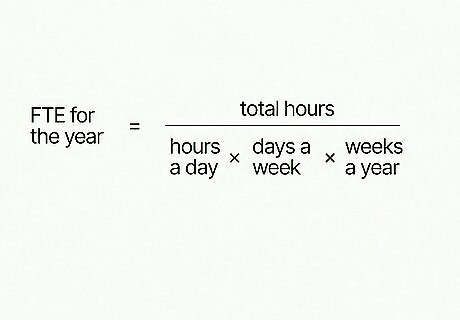
Divide the total hours by the full-time hours. To calculate FTE for the year, divide the total hours by 2,080 (8 hours a day x 5 days a week x 52 weeks a year). The result is the total full-time equivalent employees you have. Example: 14,530 total hours ÷ 2,080 full-time hours = 6.98 FTEs. Holiday hours and other paid leave are already accounted for as part of the hours worked so you don’t need to make any special calculations.
How do you use FTE calculations?

Use FTEs to check eligibility for tax and health insurance policies. Some health insurance policies through the Affordable Care Act are only available to businesses that have certain FTEs. For example, the Small Business Health Options Program (SHOP) requires you to have fewer than 50 FTEs to qualify. If you have more than 50 FTEs, then your business must offer 12 weeks of family and medical leave as well as more comprehensive health insurance plans.
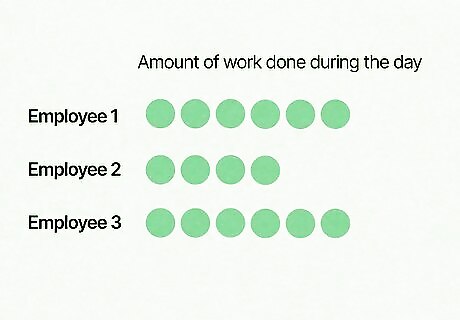
Compare employee FTEs to determine their efficiency. Look at the FTEs for individual employees at your business. Since each full-time employee counts as 1 FTE, they should each get a similar amount of work done during the day. If there are full-time employees getting less work done than others, then they aren’t working as effectively and can use improvement. Example: If a full-time employee and part-time employee are getting the same amount of work done, then the full-time employee is only working with an efficiency of 0.5 FTE. The full-time employee either needs additional tasks to fill their time or to be talked to about their performance.
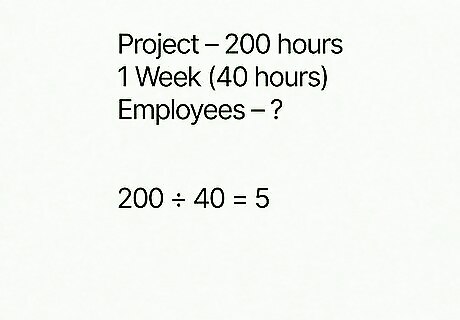
Check FTEs to see how many employees you need for a project. If you have an estimate for how long a work project will take, divide the estimated hours by the hours in a workweek. The result is the number of full-time equivalent employees you’ll need to complete the project. Example: If a project requires 200 hours to complete, divide 200 by 40 hours in a workweek. 200 project hours ÷ 40 workweek hours = 5 FTEs. You’ll need 5 full-time employees working for a full workweek to complete your project.















Comments
0 comment